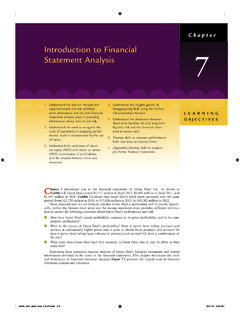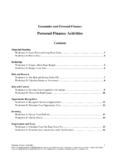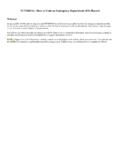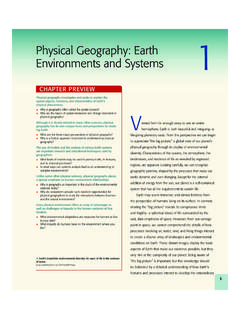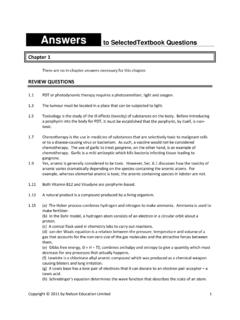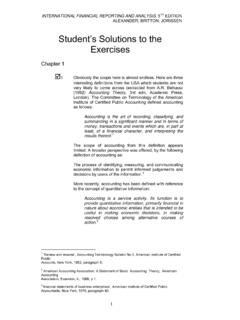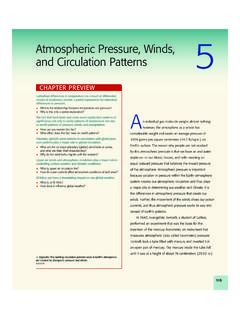Transcription of Legal, Ethical, and Professional Issues in Information ...
1 Chapter 3. Cengage Learning. All rights reserved. No distribution allowed without express authorization. Legal, Ethical, and Professional Issues in Information security In civilized life, law floats in a sea of ethics. EARL WARREN, CHIEF JUSTICE OF. THE UNITED STATES, 12 NOVEMBER 1962. Henry Magruder made a mistake he left a CD at the coffee station. Later, when Iris Majwubu was topping off her mug with fresh tea, hoping to wrap up her work on the current SQL code module before it was time to go home, she saw the unlabeled CD on the counter. Being the helpful sort, she picked it up, intending to return it to the person who'd left it behind. Expecting to find perhaps the latest device drivers, or someone's work from the development team's office, Iris slipped the disk into the drive of her computer and ran a virus scan on its contents before opening the file explorer program.
2 She had been correct in assuming the CD. contained data files, and lots of them. She opened a file at random: names, addresses, and Social security numbers appeared on her screen. These were not the test records she expected; they looked more like critical payroll data. Concerned, she found a file and opened it. It read: Jill, see files on this disc. Hope they meet your expectations. Wire money to account as arranged. Rest of data sent on payment. Iris realized that someone was selling sensitive company data to an outside Information broker. She looked back at the directory listing and saw that the files spanned the range of 89. 90 Chapter 3. every department at Sequential Label and Supply everything from customer lists to ship- ping invoices.
3 She saw one file that appeared to contain the credit card numbers of every Web customer the company supplied. She opened another file and saw that it only con- tained about half of the relevant data. Whoever did this had split the data into two parts. That made sense: payment on delivery of the first half. Now, who did this belong to? She opened up the file properties option on the file. The file owner was listed as hmagruder. That must be Henry Magruder, the devel- oper two cubes over in the next aisle. Iris pondered her next action. Cengage Learning. All rights reserved. No distribution allowed without express authorization. LEARNING OBJECTIVES: Upon completion of this material, you should be able to: Describe the functions of and relationships among laws, regulations, and Professional organizations in Information security Differentiate between laws and ethics Identify major national laws that affect the practice of Information security Explain the role of culture as it applies to ethics in Information security Introduction As a future Information security Professional , you must understand the scope of an organiza- tion's legal and ethical responsibilities.
4 The Information security Professional plays an impor- tant role in an organization's approach to managing liability for privacy and security risks. In the modern litigious societies of the world, sometimes laws are enforced in civil courts, where large damages can be awarded to plaintiffs who bring suits against organizations. Sometimes these damages are punitive assessed as a deterrent. To minimize liability and reduce risks from electronic and physical threats, and to reduce all losses from legal action, Information security practitioners must thoroughly understand the current legal environment, stay current with laws and regulations, and watch for new and emerging Issues .
5 By educating the manage- ment and employees of an organization on their legal and ethical obligations and the proper use of Information technology and Information security , security professionals can help keep an organization focused on its primary objectives. In the first part of this chapter, you learn about the legislation and regulations that affect the management of Information in an organization. In the second part, you learn about the ethical Issues related to Information security , and about several Professional organizations with estab- lished codes of ethics. Use this chapter as both a reference to the legal aspects of Information security and as an aide in planning your Professional career.
6 Law and Ethics in Information security In general, people elect to trade some aspects of personal freedom for social order. As Jean- Jacques Rousseau explains in The Social Contract, or Principles of Political Right1, the rules the members of a society create to balance the individual rights to self-determination against the needs of the society as a whole are called laws. Laws are rules that mandate or prohibit Legal, Ethical, and Professional Issues in Information security 91. certain behavior; they are drawn from ethics, which define socially acceptable behaviors. The key difference between laws and ethics is that laws carry the authority of a governing body, and ethics do not.
7 Ethics in turn are based on cultural mores: the fixed moral attitudes or cus- toms of a particular group. Some ethical standards are universal. For example, murder, theft, assault, and arson are actions that deviate from ethical and legal codes throughout the world. Organizational Liability and the Need for Counsel 3. What if an organization does not demand or even encourage strong ethical behavior from its employees? What if an organization does not behave ethically? Even if there is no breach of Cengage Learning. All rights reserved. No distribution allowed without express authorization. criminal law, there can still be liability. Liability is the legal obligation of an entity that extends beyond criminal or contract law; it includes the legal obligation to make restitution, or to compensate for wrongs committed.
8 The bottom line is that if an employee, acting with or without the authorization of the employer, performs an illegal or unethical act that causes some degree of harm, the employer can be held financially liable for that action. An organiza- tion increases its liability if it refuses to take measures known as due care. Due care standards are met when an organization makes sure that every employee knows what is acceptable or unacceptable behavior, and knows the consequences of illegal or unethical actions. Due dili- gence requires that an organization make a valid effort to protect others and continually maintains this level of effort. Given the Internet's global reach, those who could be injured or wronged by an organization's employees could be anywhere in the world.
9 Under the legal system, any court can assert its authority over an individual or organization if it can establish jurisdiction that is, the court's right to hear a case if a wrong is committed in its territory or involves its citizenry. This is sometimes referred to as long arm jurisdiction the long arm of the law extending across the country or around the world to draw an accused individual into its court systems. Trying a case in the injured party's home area is usually favorable to the injured Policy Versus Law Within an organization, Information security professionals help maintain security via the establishment and enforcement of policies. These policies guidelines that describe acceptable and unacceptable employee behaviors in the workplace function as organizational laws, complete with penalties, judicial practices, and sanctions to require compliance.
10 Because these policies function as laws, they must be crafted and implemented with the same care to ensure that they are complete, appropriate, and fairly applied to everyone in the workplace. The dif- ference between a policy and a law, however, is that ignorance of a policy is an acceptable defense. Thus, for a policy to become enforceable, it must meet the following five criteria: Dissemination (distribution) The organization must be able to demonstrate that the relevant policy has been made readily available for review by the employee. Common dissemination techniques include hard copy and electronic distribution. Review (reading) The organization must be able to demonstrate that it disseminated the document in an intelligible form, including versions for illiterate, non-English read- ing, and reading-impaired employees.
